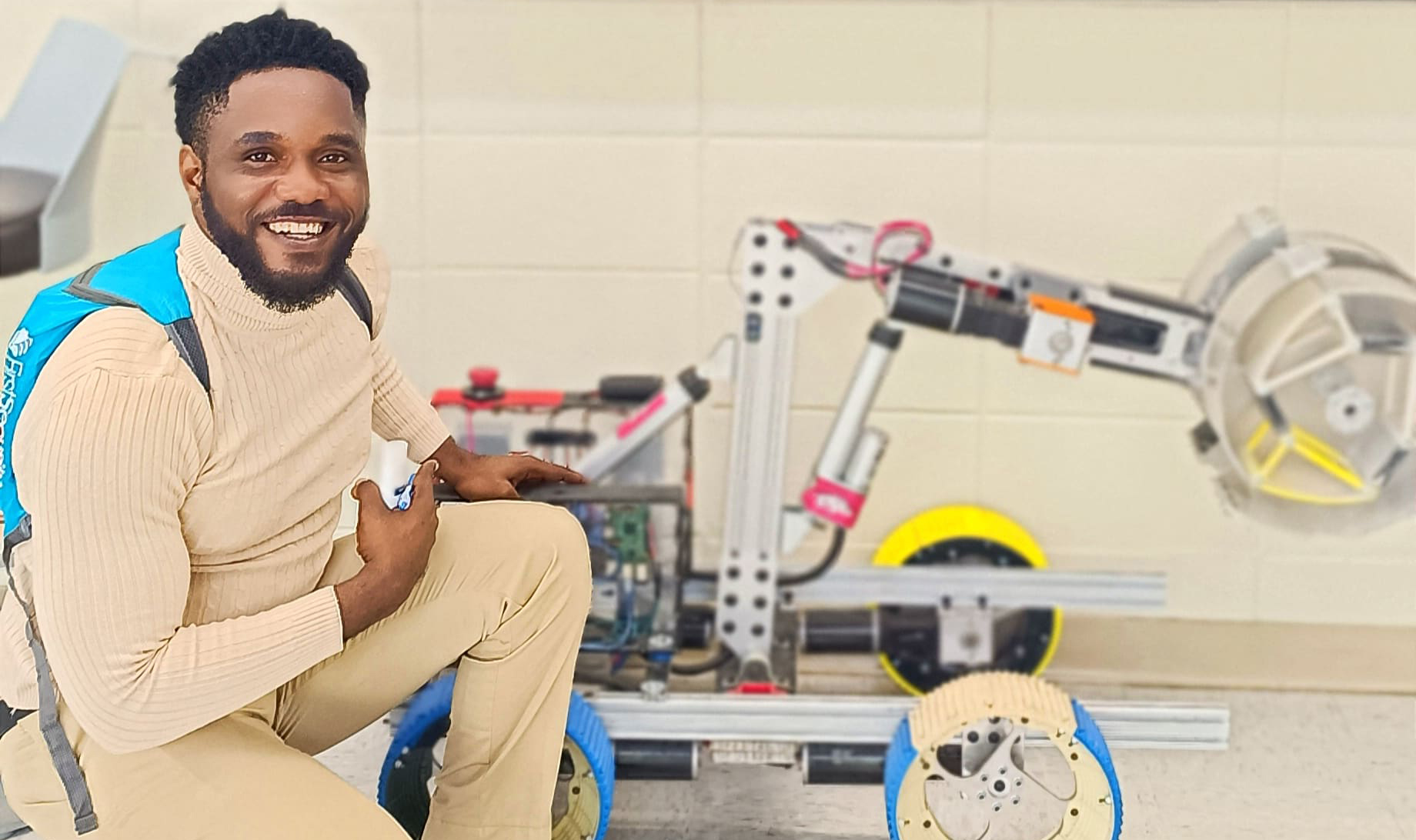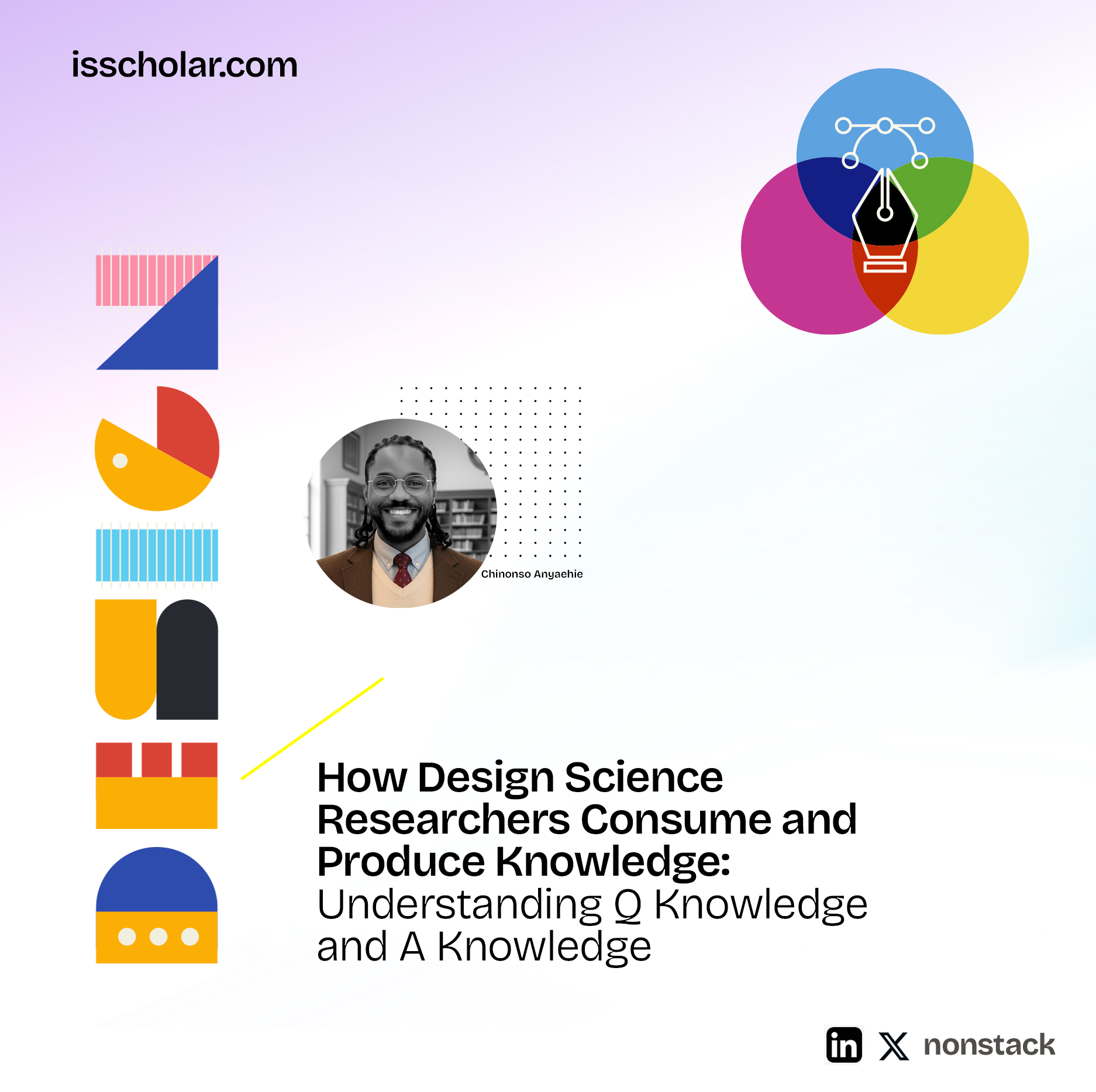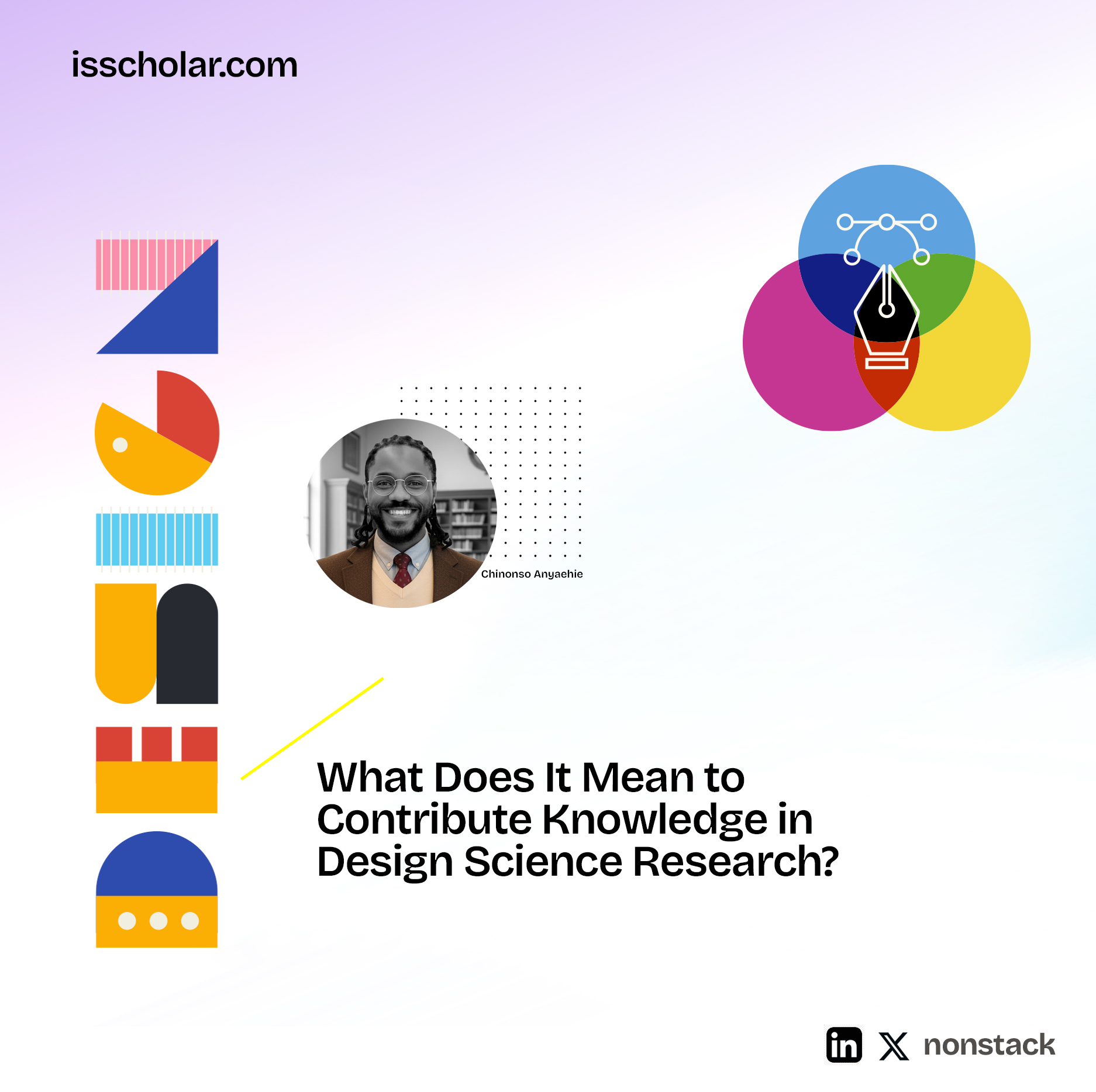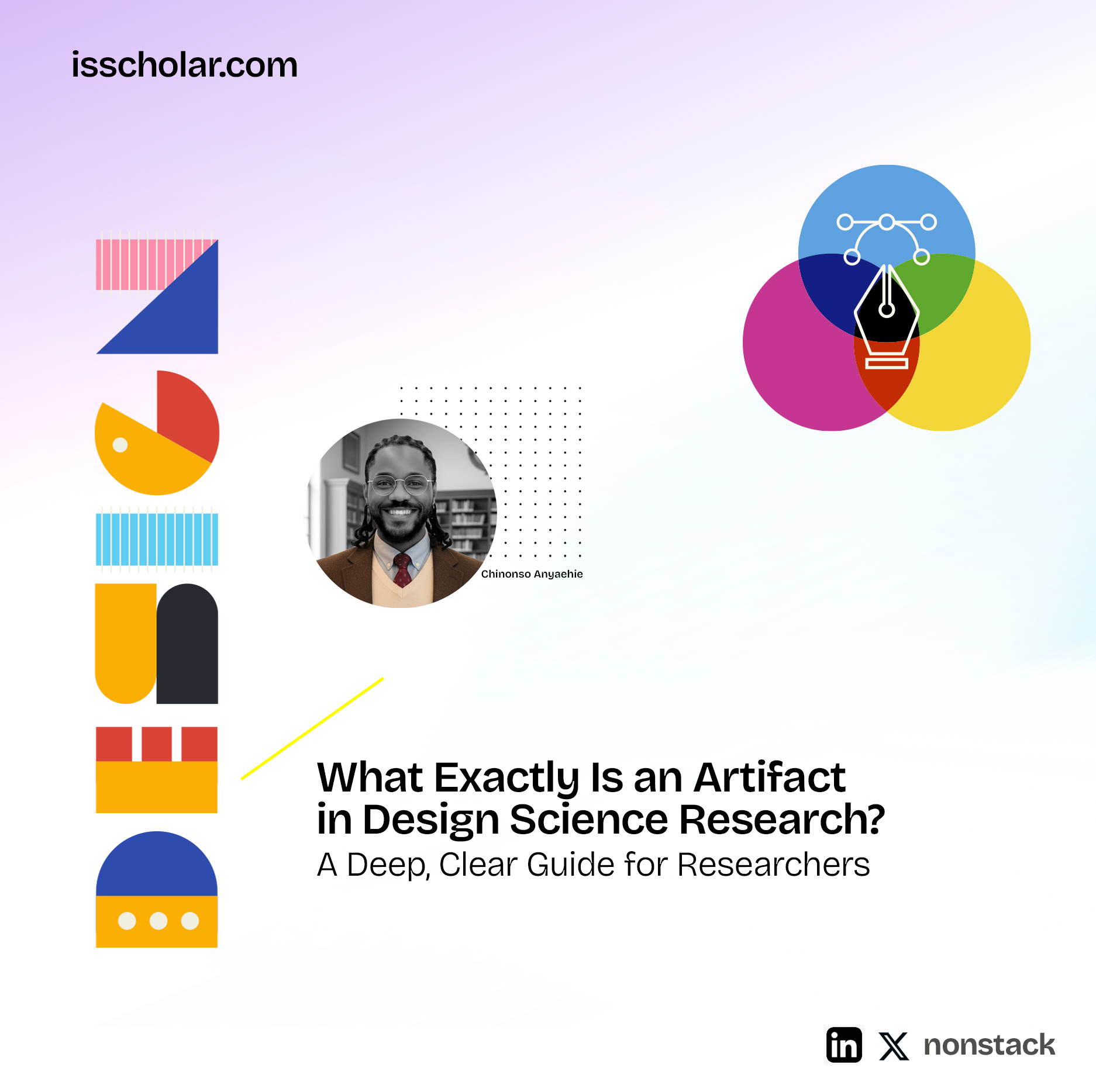Design Science Research (DSR) is not just about building new artifacts. At its core, it is a disciplined way of using knowledge and creating new knowledge. To understand how DSR actually advances the Information Systems field, we need to examine how researchers draw from existing knowledge, apply it, and produce additional insights.
This section breaks down the two major types of knowledge used in DSR—descriptive knowledge and prescriptive knowledge—and shows how they interact throughout a design research project.
1. Two Types of Knowledge Every DSR Researcher Uses
Drawing from the economics of knowledge (Mokyr, 2002), useful knowledge in DSR can be categorized into two types:
A. Descriptive Knowledge (Q Knowledge, omega)
This is the “what” knowledge.
It describes:
- how natural or social phenomena behave
- observable facts
- theories that explain relationships
- laws and regularities in the world
Examples:
- cognitive load theory
- decision biases
- models of technology acceptance
- human–computer interaction principles
- behavioral theories of trust or motivation
This type of knowledge explains how the world works.
B. Prescriptive Knowledge (A Knowledge, lambda)
This is the “how” knowledge.
It describes:
- how to design
- how to build
- how to improve
- how to implement artifacts
Examples:
- algorithms
- system architectures
- design principles
- software engineering patterns
- process workflows
- design methods
- interface templates
This knowledge explains how to create human-built artifacts effectively.
2. Together, Q and A Knowledge Form the DSR Knowledge Base
A mature DSR domain has both:
- Q Knowledge: descriptive theories that explain phenomena
- A Knowledge: prescriptive theories, methods, and artifacts used to solve problems
These create a complete knowledge base that researchers can draw from when grounding their work.
3. How Q and A Knowledge Interact in a DSR Project
A DSR project normally begins with:
- a challenging real-world problem
- a promising opportunity
- or an innovative idea
Then the researcher asks the most important question:
“What do we already know?”
This triggers two parallel activities.
A. Investigating the Q Knowledge Base
The researcher asks:
- What existing theories can explain this problem?
- What descriptive knowledge helps me understand user behavior, system dynamics, or organizational constraints?
- What constructs, relationships, or empirical findings are relevant?
This may involve drawing from:
- psychology
- economics
- sociology
- behavioral science
- computer science theory
This grounding helps clarify:
- why the problem occurs
- what variables matter
- what outcomes are desirable
Q knowledge helps sharpen the research question.
B. Investigating the A Knowledge Base
The researcher also asks:
- What artifacts or design solutions already exist?
- What design methods or principles have been used before?
- How have others solved similar problems?
- What are the limitations of existing artifacts?
This review helps determine:
- whether the new artifact is truly novel
- how it extends or improves existing designs
- what the baseline is for comparison
In many cases, a new contribution builds on what came before:
- extending an existing method
- refining a design principle
- applying a known artifact in a new domain
4. Producing Knowledge: How DSR Creates Something New
A successful DSR project depends on the research team’s ability to combine three abilities:
A. Knowledge Skills
The team must skillfully gather and synthesize knowledge from both Q and A bases. This ensures the work is grounded and contributes something new rather than repeating what is already known.
B. Cognitive Skills
The team uses creativity, reasoning, and problem-solving to design innovative artifacts that address the identified problem.
C. Social Skills
Effective teamwork matters. Strong DSR projects require:
- collaboration
- shared understanding
- integration of diverse expertise
- collective intelligence
These human skills are essential because DSR projects often involve multi-disciplinary teams solving complex real-world issues.
5. Why Understanding Q and A Knowledge Matters
This framework helps clarify the flow of a DSR project:
- Begin with a problem or opportunity
- Draw on Q Knowledge to understand the phenomenon
- Draw on A Knowledge to review existing artifacts and methods
- Design a new or improved artifact
- Produce new A Knowledge (design principles, methods, models)
- Possibly refine Q Knowledge through new insights
- Contribute to both theory and practice
This explains why DSR is powerful. It is not just making things. It is making knowledge through the things we make.
Conclusion: DSR Is a Knowledge Engine
When you break it down, Design Science Research is essentially a knowledge engine powered by two different but complementary fuels:
- Q Knowledge: understanding the world
- A Knowledge: designing the world
A strong DSR project draws strategically from both, then produces new knowledge that can guide future design, innovation, and theory development.
Understanding how these knowledge types interact helps researchers:
- design better artifacts
- write stronger papers
- position contributions clearly
- and advance both science and practice in meaningful ways
This dual-knowledge perspective is essential for anyone who wants to excel in Design Science Research.









Leave a Reply